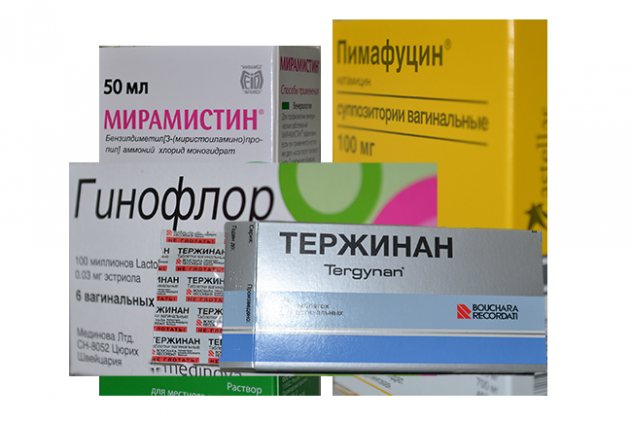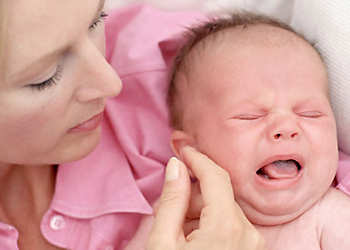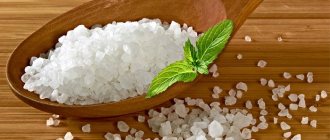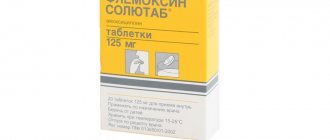The danger of thrush during lactation
Although the treatment of thrush during breastfeeding is somewhat complicated, it cannot be neglected. The disease can become chronic with frequent relapses, and then it will be much more difficult to eliminate it.
In addition, the local infectious-inflammatory process can spread to neighboring organs:
- candidiasis in the mouth spreads to the tonsils, pharynx, esophagus and bronchi;
- fungal skin infection spreads to wider areas;
- thrush in the intestines is a reservoir of yeast infection that can multiply in the vagina, mouth, and skin;
- from the vagina, candidiasis enters the uterus, fallopian tubes, urethra, urinary canals and other organs of the genitourinary system.
Thrush in nursing women often affects the skin of the nipples, causing discomfort. Pain, swelling, dryness, flaking of the skin, redness and cracks in the areolas appear. This form of the disease is dangerous because it can easily be transmitted to a child. At the same time, his oral cavity becomes covered with a white coating, causing pain, burning, and discomfort.
Another danger of breast candidiasis is that the outflow of milk is hampered. Its stagnation can provoke the development of mastitis.
Treatment of thrush during lactation should be carried out in a timely manner and apply not only to the mother, but also to the child.
Causes of thrush during breastfeeding
Pregnancy, childbirth and subsequent breastfeeding are periods of increased stress and strain on a woman’s body. Physiological changes, including those from the hormonal system, lead to a decrease in protective forces.
A significant part of the mother's immune cells reaches the baby through the placenta tissue, and after birth - through milk. All these factors create favorable conditions for the proliferation of fungal and any other infection. Read more about the causes of thrush in women→
The normal microflora of the vagina may contain a certain amount of Candida fungi, which do not manifest themselves in any way and do not cause discomfort. The woman’s immunity controls their reproduction, but when it decreases, the colonies grow rapidly.
The next common cause of candidiasis during lactation is the use of local antibiotics (suppositories, vaginal tablets). Medicines of this type destroy not only the pathogenic microflora of the vagina, but also the beneficial ones. As a result, fungi do not encounter resistance from the body and actively multiply.
Sexual transmission of thrush is also possible, but it is rare during breastfeeding. Only about 20% of women get sick for this reason.
Symptoms of thrush during breastfeeding
It is advisable to begin treatment of thrush during lactation when the diagnosis is accurately established.
In young mothers, the fungus most often spreads in the nipples and milk ducts, and the following is observed:
- Change in nipple color. It becomes bright pink, shiny, sometimes covered with scales and a white coating. The skin dries and peels.
- The appearance of severe, shooting, or burning pain during feeding. It intensifies towards the end of the process, and can also appear during periods of rest. It is felt not only on the surface of the skin, but also inside the nipple. Sometimes it goes to the arm or shoulder.
- Change in nipple sensitivity. Pain and burning are felt even during hygiene procedures and when wearing tight-fitting underwear.
- If the genital organs are affected - burning, itching, redness, white discharge resembling cottage cheese.
All these symptoms can be of varying severity. Sometimes the nipples remain unchanged in appearance, but the itching and pain gradually increase. It is especially important to listen to the sensations in this area if vaginal or another type of candidiasis has already been identified.
Features of thrush during lactation
Thrush is one of the most serious complications of the postpartum period.
During breastfeeding, candidiasis gives a woman even more discomfort. In addition to the traditional symptoms of vulvovaginitis in the form of itching and burning of the external genitalia, their swelling, redness, as well as the characteristic abundant cheesy discharge from the vagina, the patient also experiences severe burning pain in the mammary glands and on the surface of the nipples. These symptoms are often attributed to milk stagnation and attempts are made to “milk” the nursing mother, causing her even greater suffering. After breastfeeding ends, the pain coming from the nipple into the breast intensifies, which in some cases even forces women to give up breastfeeding.
With thrush, nipples become shiny, bright pink, sometimes with a white coating or rash. They experience a burning sensation and pain due to contact with clothing. Cracks often appear on them, which, even if the child grasps the breast correctly, do not heal. In some cases, there is a decrease in the amount of breast milk.
Such high sensitivity of the nipples can also be observed due to other reasons. These include herpes, eczema and simply improper attachment to the breast. If these factors are excluded, then most likely the patient has thrush.
Quite often the disease also affects the baby. It manifests itself as a white coating on the tongue, gums or inner surfaces of the cheeks. The plaque has the form of spots with a reddish rim. When feeding, the baby experiences pain, shows anxiety, releases the nipple and cries. Therefore, the disease must be treated in both mother and child.
In addition, children may experience skin manifestations in the groin areas. This is usually a bright pink or red rash in the form of small pimples. Typically, baby care products based on various oils or starches only aggravate these phenomena, since they serve as a favorable environment for fungus.
How to treat thrush while breastfeeding?
Treatment of thrush during lactation has its own specifics. Some anti-candidiasis medications are prohibited because they may harm the baby. The main emphasis is on the use of local drugs in combination with traditional methods. Their effect can be enhanced by a properly organized lifestyle of a young mother.
Candles for thrush
Vaginal suppositories are the main remedies for thrush during breastfeeding. They act at the local level, absorption into the blood is insignificant, the risk of the drug affecting the child is minimal. There is no need to stop feeding. Used for vaginal candidiasis.
Suppositories are divided into two types: antifungal (Pimafucin, Clotrimazole) and restoring normal microflora (Bifidumbacterin). The drug must be administered into the vagina in the evening, before bedtime. Treatment cannot be interrupted; the course must be complete. This will help avoid relapses of the disease.

Creams, ointments and solutions
Treatment of thrush in women who are breastfeeding also involves treating the affected areas with antifungal creams, ointments and solutions. Similar agents include Candide, Hexoral, Monistat, and nystatin ointment. They will help eliminate discomfort on the external genitalia and nipples.
Along with the use of antifungal agents, it is necessary to restore the microflora of the areolas. To do this, dry Lactobacterin powder must be diluted with water to a cream consistency and applied to the nipples. There is no need to rinse off. Such applications quickly eliminate the symptoms of the disease and are harmless to the child.
Tablets for thrush
Thrush during lactation is not treated with oral tablets. The active ingredients of such drugs easily penetrate into the blood and breast milk, and they are contraindicated for children. In severe cases, when the infection spreads throughout a woman’s body, antibiotics cannot be avoided. In this case, you will need to interrupt breastfeeding for the period of treatment.
If vaginal thrush is detected, treatment during breastfeeding may include the use of Terzhinan.
These are topical antifungal tablets. They are used in the same way as candles.
Lifestyle of a nursing mother
Treatment can be made more effective by following some lifestyle recommendations:
- continue to breastfeed the baby, otherwise there is a high risk of milk stagnation;
- adhere to hygiene rules (wash your breasts and hands after using the toilet and outside, keep your underwear clean, do not use breast pads or change them after each feeding);
- stick to a diet without products containing yeast, control the amount of sugar in the diet;
- choose underwear from breathable fabrics (cotton), loose clothing;
- take air and sun baths (if the surface of the chest is affected).

Traditional methods for thrush on guard
These methods are more gentle, but to achieve lasting results, you need to carry out the procedures regularly, over a long period of time. There is no quick cure this way.
The following are considered the most effective folk methods:
- treating the skin of the chest and external genitalia with decoctions of anti-inflammatory herbs (St. John's wort, chamomile, calendula);
- douching with herbal decoctions (a mixture of chamomile, calendula and oak bark);
- treating the skin of the chest and external genitalia with a solution of soda (for half a liter of water - 2 tsp of soda).
Green tea is known for its cleansing properties. It prevents the growth of fungus, so it is worth including this drink in your daily diet. Treatment of thrush during lactation with folk remedies is especially indicated when general medications are prohibited.
How does this affect the child?

This disease in a child manifests itself as a white coating on the gums, tongue or inner surfaces of the cheeks. Despite the fact that a woman is breastfeeding, thrush must be eliminated during breastfeeding. This disease causes great harm to the mother.
First of all, it depletes a woman’s body, reducing the quality of sexual life and general psychological state.
But this pathology harms not only the mother. Candidiasis is also dangerous for a child. Candida fungi are transmitted from mother to child . Thrush of the mucous membranes in newborns is a common disease in pediatrics.
A severe form of the pathology causes disturbances in the development and growth of the baby. The child begins to eat poorly and abandons the breast crying.
Important! Treatment of thrush during breastfeeding, drugs should be prescribed only by specialists. This is due to the fact that the drugs can harm the baby, and they are contraindicated during lactation.
Dr. Komarovsky will tell you more about the treatment of thrush in the mouth of a baby:
Prevention of thrush in women while breastfeeding
Curing thrush during breastfeeding means being patient, as this is a long and laborious process.
To minimize the risk of disease, you need to adhere to preventive measures:
- observe hygiene rules, wash your face at least twice a day and wash the skin of your breasts after each feeding using mild cleansers;
- change pads frequently during menstruation, avoid tampons;
- use personal towels;
- eat regularly and variedly, the diet should consist mainly of cereals, meat, fresh vegetables and fruits;
- do not swim in open waters;
- wear underwear made of natural fabric, correctly selected in size.
Treatment of thrush during breastfeeding is specific. General medications are contraindicated; the main emphasis should be on local remedies (vaginal suppositories and tablets, ointments, creams, solutions).
You can enhance the effectiveness of medications using traditional methods and proper organization of your lifestyle. At the first suspicion of candidiasis, a nursing woman should contact a gynecologist, and to examine the child, a pediatrician.
Author: Olga Khanova, doctor, especially for Mama66.ru
Treatment of candidiasis in children
Treatment of a nursing woman for thrush will be incomplete and ineffective if attention is not paid to the child’s health condition. While remaining in the newborn's oral cavity, Candida fungi can re-attack the mother's body. Therefore, during the course of treatment you must adhere to the following rules:
- After each feeding, the baby’s mouth is cleaned of residual breast milk with a finger wrapped in gauze, which is pre-moistened with Candide solution or nystatin drops. The duration of use of these drugs and their dosage is considered by the pediatrician on an individual basis.
- When candidiasis rashes appear in the baby's perineum, it is recommended to use external remedies from those that are usually prescribed to a nursing mother. The dosage, duration and frequency of application are determined individually.
- All objects and things that come into contact with the child must be sterile. Pacifiers, bottles and toys are boiled for at least 20 minutes every day or processed in household ultrasonic sterilizers. Textiles are washed with fragrance-free powder and thoroughly ironed with steam. Before interacting with the child, parents and other family members should wash their hands with soap.
Even if a child does not experience discomfort from the appearance of thrush in his mouth, it is not recommended to treat the disease on your own. The body of a newborn is fragile and vulnerable, and in order to avoid various complications, the baby needs the supervision of a pediatrician.











